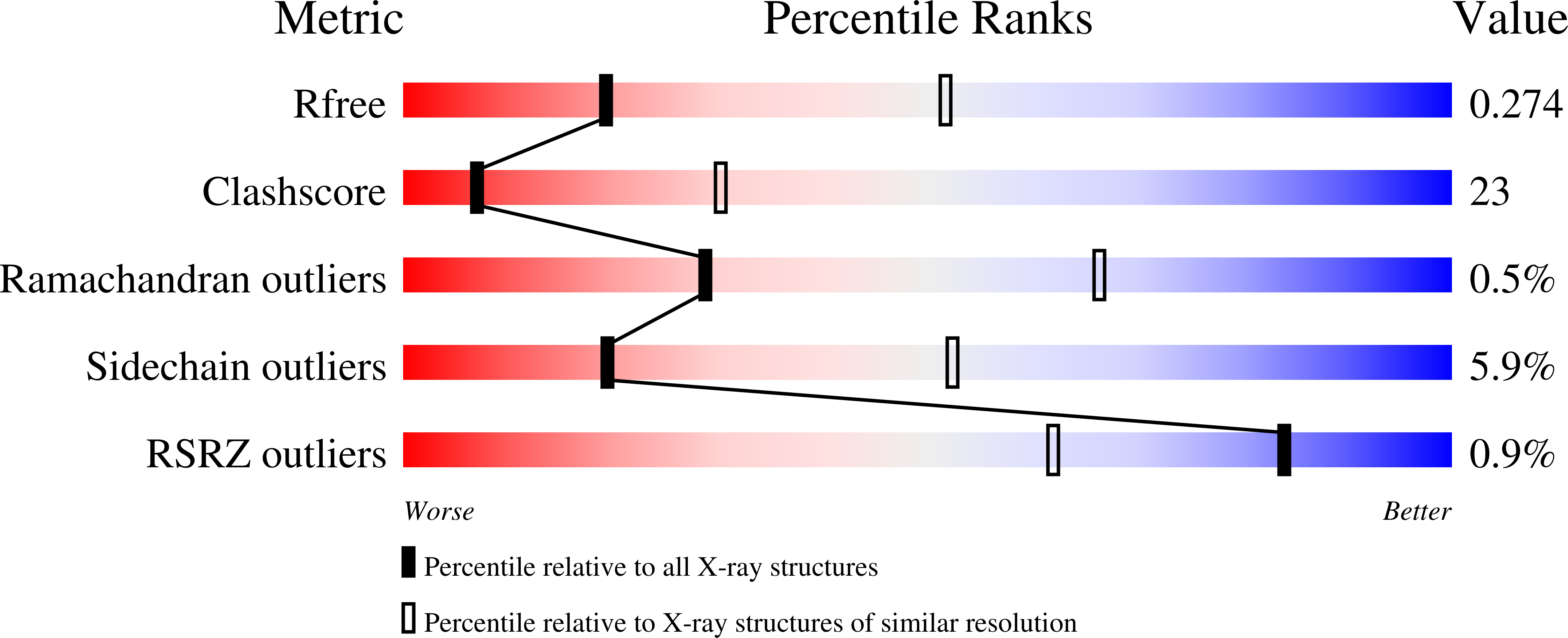Structural basis for the preference of UTP over ATP in human deoxycytidine kinase: illuminating the role of main-chain reorganization.
Godsey, M.H., Ort, S., Sabini, E., Konrad, M., Lavie, A.(2006) Biochemistry 45: 452-461
- PubMed: 16401075
- DOI: https://doi.org/10.1021/bi0518646
- Primary Citation of Related Structures:
2A2Z, 2A30 - PubMed Abstract:
Human deoxycytidine kinase (dCK) uses nucleoside triphosphates to phosphorylate several clinically important prodrugs in addition to its natural substrates. Although UTP is the preferred phosphoryl donor for this reaction, our previous studies reported dCK structures solely containing ADP in the phosphoryl donor binding site. To determine the molecular basis of the kinetically observed phosphoryl donor preference, we solved crystal structures of a dCK variant lacking a flexible insert (residues 65-79) but having similar catalytic properties as wild type, in complex with deoxycytidine (dC) and UDP, and in the presence of dC but the absence of UDP or ADP. These structures reveal major changes in the donor base binding loop (residues 240-247) between the UDP-bound and ADP-bound forms, involving significant main-chain rearrangement. This loop is disordered in the dCK-dC structure, which lacks a ligand at the phosphoryl donor site. In comparison with the ADP-bound form, in the presence of UDP this loop is shifted inward to make closer contact to the smaller uracil base. These structures illuminate the phosphoryl donor binding and preference mechanisms of dCK.
Organizational Affiliation:
Department of Biochemistry and Molecular Genetics, University of Illinois at Chicago, 900 South Ashland Avenue, Chicago, Illinois 60607, USA.
















